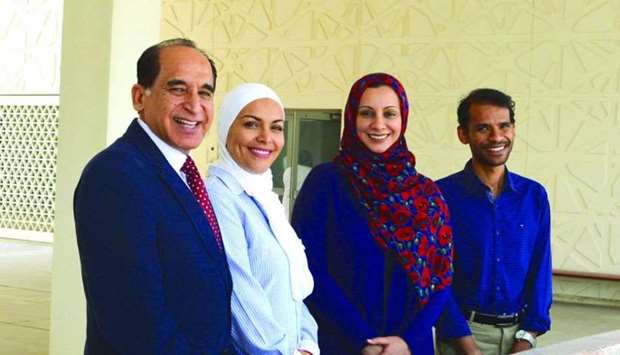Researchers at Weill Cornell Medicine-Qatar (WCM-Q) have published a study of adult mortality trends in Qatar, giving a detailed breakdown of the leading causes of death of non-Qataris and Qataris.
The study analysed mortality data over a 27-year period, from 1989 to 2015, during which time Qatar experienced rapid population growth as large numbers of migrant workers arrived.
Between 2005 and 2010, the population growth was 22%; it was less than 4% before 2000. Consequently, Qatar’s population aged 15 years and above is approximately 90% non-Qatari, WCM-Q said in a statement.
"Because Qatar’s community is highly diverse, viewing the overall mortality data for the entire country provides limited information about the leading causes of death of each group. The new research by WCM-Q sought to give a more accurate view of adult mortality in Qatar by comparing the trends for the national and migrant populations," the statement said.
Titled ‘Adult mortality trends in Qatar, 1989-2015: National population versus migrants’, the study analysed available mortality data by breaking it down by nationality, sex, age group, year of death and cause of death; the latter based on the World Health Organisation’s classification of diseases.
Among Qatari and non-Qatari adults, overall mortality rates fell for both men and women over the period. This is believed to have been caused by free access to a modernised and expanded healthcare system, improved education and socioeconomic development.
Among Qatari males, the main cause of deaths was transport injuries, largely from road accidents, although the mortality rate in this category fell over the period, coinciding with government measures to improve road safety. The mortality rate for transport injuries over the period was higher for Qatari males than for non-Qatari males.
For Qatari and non-Qatari females, the main cause of death was neoplasms, usually cancerous tumours.
The study also found that mortality caused by falls among non-Qatari men decreased significantly between 2001 and 2014 from 5.1 to 2.6 per 100,000.
“Remarkably, mortality due to falls in non-Qatari males decreased significantly, suggesting safety improvement in the work environment. Non-Qatari males’ work environment seems to have improved over time. In 2010-2013, the yearly fatal occupation rated was 1.6/100,000 in the only designated hospital for major injury treatment in Qatar. This is half what is reported in the United States - 3.4/100,000,” the study notes.
Dr Ravinder Mamtani, professor of Healthcare Policy and Research at WCM-Q, is the senior author of the study.
“Qatar is a very successful multicultural community that has attracted extremely high levels of inward migration from all over the world. Mortality trends between different demographic groups often vary widely. Our aim was to assess mortality trends of the leading causes of death for nationals and non-nationals and in so doing give a clearer insight into potential strategies for avoiding preventable deaths for all members of the community,” he noted.
Dr Karima Chaabna, Population Health and Communication specialist, is first author of the paper, while Dr Sohaila Cheema, director of WCM-Q’s Institute for Population Health and assistant professor of Healthcare Policy and Research, Dr Amit Abraham, projects specialist, and Dr Hekmat Alrouh also worked on the study.

